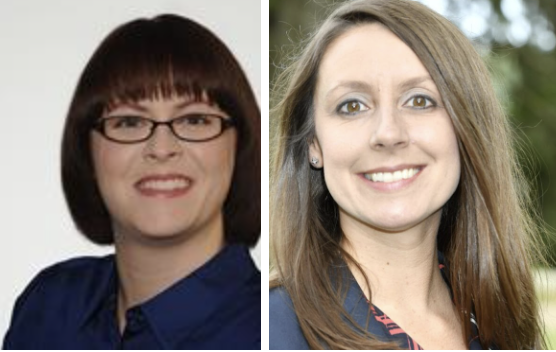Alliance Discussion with Dr. Heidi Olsen and Dr. Bri Sheppard: Bridging the Gap—Understanding What Drives Rural Health Disparities

Dr. Bri Sheppard, associate director, Rural Health Workforce and Center Development, National Center for Rural Health Professions and Dr. Heidi Olsen, assistance professor and clinical pharmacist, both at the University of Illinois College of Medicine Rockford recently joined us for an alliance discussion on rural health disparities. Rural Americans face a range of alarming health disparities compared to their urban counterparts. According to the Centers for Disease Control and Prevention (CDC), rural Americans are more likely to die from cancer, heart disease, unintentional injury, and stroke than those living in urban areas. What role can research play in addressing these disparities? What has research already revealed about the known causes of rural health disparities, and what innovative strategies are being deployed to address those causes? Here are some of their thoughts on:
How we define rural in research:
“The Census Bureau defines rural as any population that has less than 2,500 people. The Office of Management and Budget and the 2002 Farm Bill define rural as any one city with a population of less than 50,000 people. Still different is the Department of Veteran Affairs definition, which has a population density of less than 1,000 people per square mile. […] In Illinois specifically, there are a lot of different definitions of rural that show up in the research literature. In a study from 2021, they did a comparison of these different definitions and how they impact the severity of what we see as rural health disparities. How many people are considered rural varies a lot depending on the definition that was used. In this particular paper, the authors concluded that the definition of rural you should use depends on the goals of the program that you have, whether it’s workforce or chronic conditions, to be able to make comparisons to previous literature.”
Why research is important for rural health:
“Research is important for decision making. You’ll see a quote from Kristine Sande, who’s at the Rural Health Information Hub, if you don’t know what the situation is and if you don’t have data to back it up, it’s hard to make a case for why you need something, don’t need something, or why a program or policy needs to change. It’s really about health equity. To increase health equity across our rural communities, we need to assess what’s going on, we need to work together, and we need research to back up what those proposed changes are going to be.”
Current rural health challenges:
“There is a lack of data about what proportion of rural students are in pharmacy school and what the predictors of rural practice are. A study in 2017 showed that less than 5% of all incoming medical students were from rural areas, and there’s robust literature that shows individuals from rural areas are the most likely to go back and practice there. We’re not leveraging that recruitment pool that we have seen over the last several decades is the most likely to fill those provider gaps. Another challenge, when we look at the number of retail pharmacies, from 2003 to 2021, the number of those retail pharmacies decreased by almost 10%, but in more urban and metro areas retail pharmacies increased by 15% during that same time. Additionally, and compounded by the COVID-19 pandemic, we’ve seen a lot of rural hospital closures and a lot of change in the service mixes that are being provided by rural hospitals now, including a reduction in the number that are offering prenatal and maternal care and inpatient pediatric care. There are more than 99 million Americans that live in an area that doesn’t have enough primary care providers, and 65% of those are rural. According to a 2017 report from the US Government Accountability Office, only 10% of physicians choose to practice in a rural setting. There is a lack of data around other health professionals, where they go, why they go, and how that contributes to rural health disparities. So, that’s an area ripe for research. Perhaps most importantly, mortality rates between rural and urban residents have increased by 12% over the last 10 years.”
Rural health funding:
“The recognition of the importance and need for up-to-date research around rural health is reflected in federal funding for rural research. Most of the major centers and divisions across the federal offices do provide some sort of rural-focused funding. Some funding announcements and programs will specifically identify rural health such as HRSA’s (Health Resources and Service Administration) Federal Office for Rural Health Policy, the rural community opioid response grant programs, and the rural residency and training programs. SAMHSA (Substance Abuse and Mental Health Services Administration) has developed and implemented rural EMS training grants and the United States Department of Agriculture has rural development program grants that address not just agricultural but also pharma, and rural mental health – as we’ve seen a significant increase in suicide rates in the rural population. Many of these [programs and grants from different organizations] include acknowledging underserved and underrepresented populations and rural is now typically included in that definition of ‘underrepresented.’”
Strategies for addressing rural health disparities:
“Research is critical to understanding not just what health disparities are and how to increase health equity, but what the mechanisms driving those health disparities are. And it’s important to look at it at multiple levels from the local level to the national and global population health levels. It’s also important to do so across disciplines – health, economics, policy, infrastructure – so we can address those systems-level factors. Each rural community is different, so having community engaged participatory research as a significant component of overall rural health research is incredibly important so that the policies, programs, and services that are implemented are reflective of community needs.”




